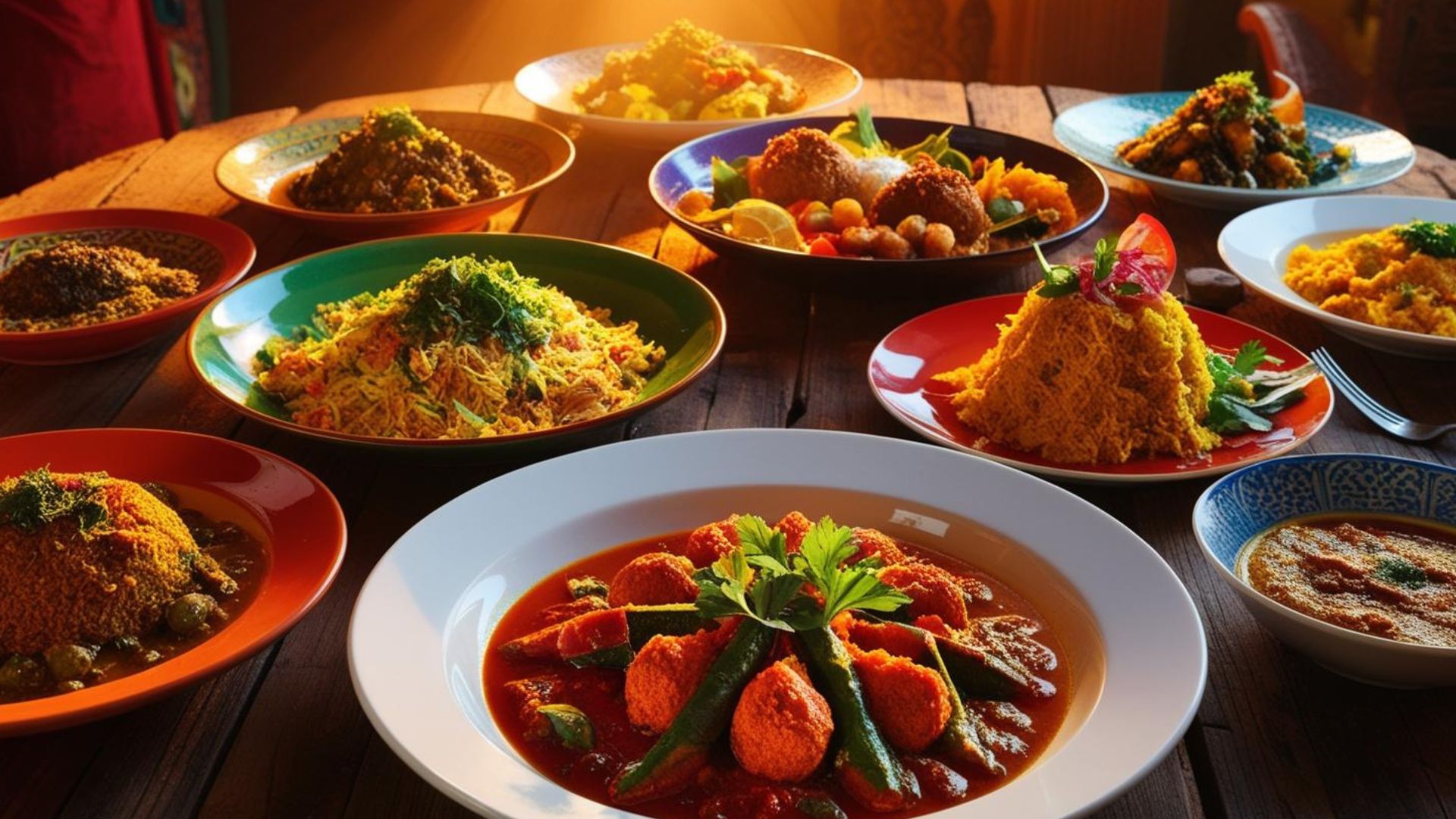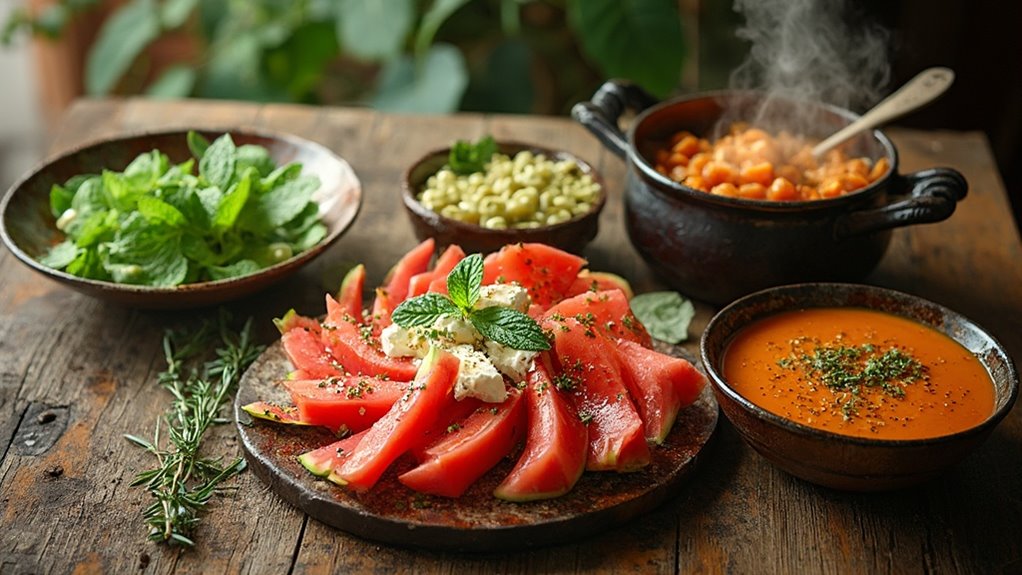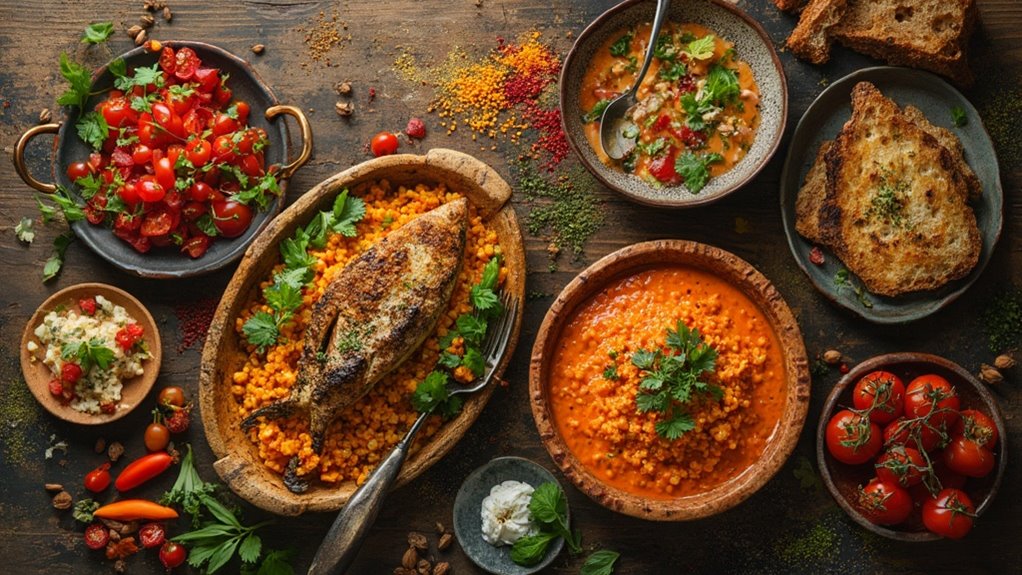Arabic cuisine is a vibrant fusion of flavors, spices, and textures, deeply rooted in centuries of tradition. From creamy hummus to crispy falafel, these dishes are beloved worldwide. If you’re new to Arabic recipes, this guide simplifies the process with easy Arabic dishes that anyone can master.
5 Easy Arabic Recipes for Beginners
A. Classic Hummus (Creamy Chickpea Dip)
Ingredients:
- 1 can chickpeas, ¼ cup tahini, 2 garlic cloves, lemon juice, olive oil.
Steps:
- Blend chickpeas, tahini, garlic, and lemon juice until smooth.
- Drizzle with olive oil and sprinkle paprika.
Tip: For extra creaminess, peel the chickpeas!
B. Falafel (Crispy Herb Fritters)
Ingredients:
- 1 cup soaked chickpeas, parsley, cumin, garlic, baking soda.
Steps:
- Blend ingredients into a coarse paste.
- Form into balls and fry (or bake) until golden.
Serving Suggestion: Pair with tahini sauce or tzatziki.
C. Chicken Shawarma (Marinated & Grilled)
Ingredients:
- Chicken thighs, yogurt, shawarma spice mix (cumin, paprika, turmeric).
Steps:
- Marinate chicken for at least 2 hours.
- Grill or pan-fry until charred and juicy.
Best With: Garlic sauce and warm pita bread.
D. Tabbouleh (Fresh Herb Salad)
Ingredients:
- Parsley, bulgur wheat, tomatoes, lemon, olive oil.
Steps:
- Chop parsley finely and mix with soaked bulgur.
- Toss with diced tomatoes, lemon juice, and olive oil.
Pro Tip: Let it sit for 30 minutes to enhance flavors.
E. Baklava (Sweet Nut Pastry)
Ingredients:
- Phyllo dough, pistachios, butter, honey syrup.
Steps:
- Layer phyllo sheets with crushed nuts and butter.
- Bake until golden, then pour honey syrup.
Storage: Keeps crispy for days in an airtight container.
Understanding Arabic Cuisine: Flavors and Staples
Arabic cooking relies on fresh ingredients and aromatic spices. Here’s what you need to know:
Key Ingredients
- Olive oil – A staple for dressings and cooking.
- Tahini – A sesame paste used in dips and sauces.
- Za’atar & Sumac – Herbs that add tangy, earthy flavors.
Regional Variations
- Levantine (Lebanon, Syria, Jordan): Fresh herbs, grilled meats, mezze platters.
- Gulf (Saudi Arabia, UAE): Rich, spiced rice dishes like kabsa.
- North African (Morocco, Egypt): Bold flavors with harissa and preserved lemons.
Essential Tools for Arabic Cooking
To make homemade Arabic meals, these tools help:
- Mortar & Pestle – For grinding fresh spices.
- Tagine or Heavy Pot – Slow-cooking stews and meats.
- Grill Pan – Perfect for shawarma and kebabs.
Pro Tips for Authentic Arabic Cooking
- Balance flavors – Arabic food mixes sweet, savory, and tangy.
- Toast spices – Enhances aroma (try cumin and coriander).
- Avoid overcooking – Keep meats tender, salads crisp.
Pairing Arabic Dishes: Mezze & More
A great mezze platter includes:
- Hummus, falafel, tabbouleh, stuffed grape leaves.
- Drinks: Mint tea or Arabic coffee (cardamom-infused).
Frequently Asked Questions (FAQs)
Q: What’s the best substitute for tahini?
A: Almond butter or Greek yogurt (though taste differs).
Q: Can I make Arabic food vegan?
A: Yes! Many dishes (falafel, hummus, mujadara) are plant-based.
Q: How do I prevent dry falafel?
A: Don’t overcook—fry at medium heat until crisp outside, soft inside.
Conclusion
Now that you’ve learned the basics of Arabic recipes, why not start with easy hummus or shawarma? These traditional Middle Eastern foods bring rich flavors to your table with simple steps.
Ready to cook? Pick one recipe, gather your spices, and enjoy a taste of Arabia!
Author Bio
Amina Hassan is a culinary expert specializing in Middle Eastern cuisine, trained in Beirut and Dubai. Her work has been featured in Food & Culture Magazine and The Spice Trail Blog.


